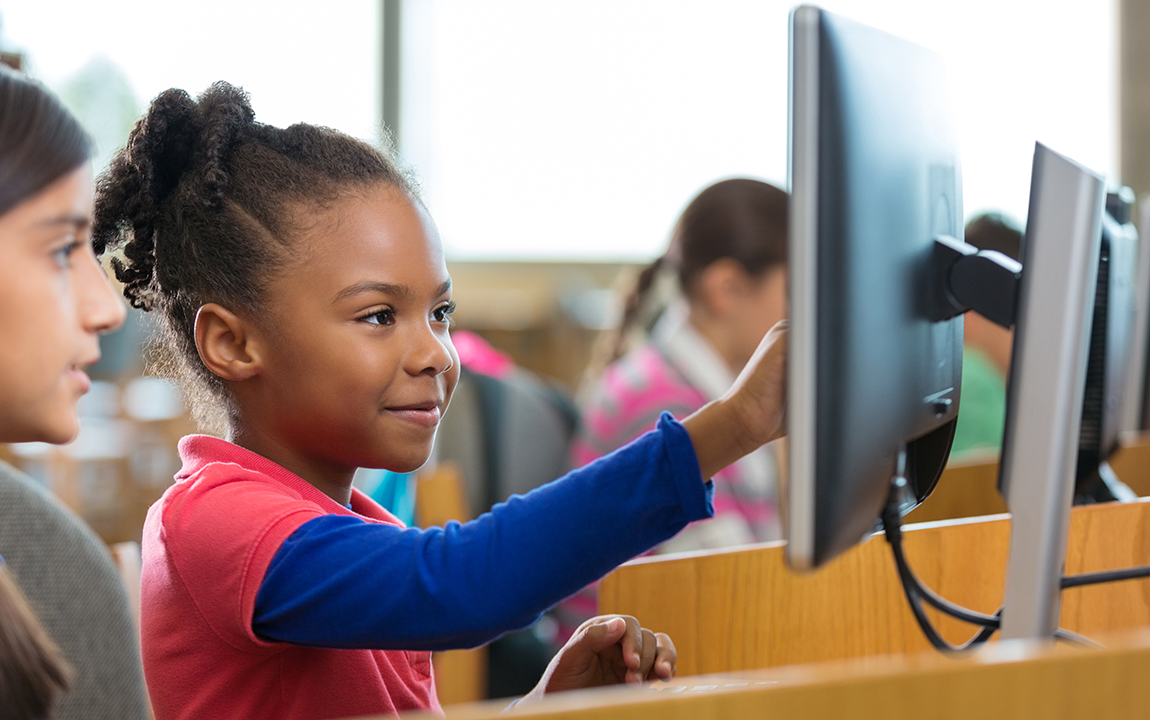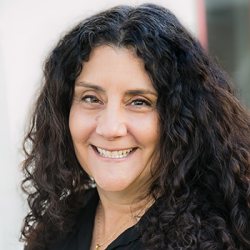
PBLWorks was proud to collaborate with a number of national and international partners and hundreds of educators to develop the Framework for High Quality Project Based Learning. The framework describes six criteria, each of which must be at least minimally present in a project for the student learning experience to be judged “high quality.” While High Quality Project Based Learning experiences can absolutely be implemented powerfully in low- or no-tech environments, there are many ways that technology can be used to support each HQPBL criterion and deepen learning. In this post (based on a session we facilitated at ISTE 2019), we’ll explore each criterion for HQPBL, discuss the kinds of digital tools that can support the criterion, and share examples.
Intellectual Challenge and Accomplishment
Students learn deeply, think critically, and strive for excellence.
From the Framework:
Digital tools that support this criterion include tools that enable peer feedback, critique and revision, in-depth exploration of discipline-specific content, and opportunities to explore high-quality models of excellent work in the discipline.
One of the best ways to deepen student intellectual engagement within a project is through well-structured classroom discussions about the content and themes of the project. Parlay Ideas is a really wonderful tool for managing, deepening, and assessing classroom discussions. The tool enables and enhances virtual or blended discussions.
In a classroom characterized by intellectual challenge, students understand that the first draft should never be the last draft. Providing and receiving quality feedback from adults and peers should be a natural part of student life. Kaizena is a Google Doc add-on that permits anyone shared on a Google Doc with the opportunity to provide voice recorded feedback, tied to evidence of skills on a rubric.
Authenticity
Students work on projects that are meaningful and relevant to their culture, their lives, and their future.
From the Framework:
To motivate students and show them the relevance of what they are learning in school, projects should be experienced as “real.” A high quality project reflects what happens in the world outside of school. It uses the tools, techniques, and technology found there. It can make an impact on other people and communities, and it can connect to the interests and concerns of young people. Students’ voices should be heard in a project, and they should be able to make choices about their work.
Authenticity in projects is supported by digital tools that mirror the tools that adults use in the professional world to accomplish similar work. For example, students might leverage 3-D modeling tools like SketchUp or AutoCAD that are also used by design, engineering, and technology professionals in the world outside of school. Additionally, digital tools can be used in the classroom to connect students to people and places in the world beyond the classroom. Tools like Nepris can help make these connections. Nepris connects educators and learners with a network of over 27,000 industry professionals, and offers daily opportunities to join live, virtual chats with professionals on a variety of topics that prepare students for college and career
Public Product
Students’ work is publicly displayed, discussed, and critiqued.
From the Framework:
In traditional schooling, most learning occurs in a private relationship between a teacher and learner; students complete work individually and show it only to the teacher. In a high quality project, students make their work public by sharing it not only with the teacher but also with each other, experts, and other people beyond the classroom. This occurs both during a project, as part of the product development and formative assessment process and at its conclusion, when the product is shared and discussed with an audience. This public process and final presentation encourages students to improve the quality of their work and demonstrates what students know and can do.
There are a wide range of digital tools that can support students’ development of public products. Anything that involves content creation, including video tools, infographics, presentation tools, and virtual museum creators can be really helpful for in this area. Social media tools can offer another powerful way to make work public.
Audio recording tools like Soundtrap or GarageBand can be great resources for students to use when creating podcasts as products. (Check out John Derian’s recent blog post about podcasting in PBL for more guidance and resources.) Another powerful tool to support public products is Canva, a free graphic design product that allows students to collaboratively create and organize products such as infographics, posters, invitations, presentations, and flyers. Canva also integrates with most social media apps and sites for ease of sharing.
Collaboration
Students collaborate with other students in person or online and/or receive guidance from adult mentors and experts.
From the Framework:
Projects may be done as an individual activity, but in today’s world – and workplace -- it is important to learn the skill of collaboration. In high quality PBL, some project work should be done as a team. This does not mean simply dividing up project tasks, completing them individually, then putting it all together at the end with no synthesis or discussion. When students truly collaborate, they are contributing individual voices, talents, and skills to a shared piece of work, while respecting the contributions of others. In some projects, students also collaborate online with students in other schools, and work with adult experts, community members, and organizations.
Collaboration can be supported by digital tools in a variety of ways. Students should be able to leverage online tools to work together on shared products, engage in synchronous or asynchronous communication with external partners, and recognize and celebrate effective feedback.
Write About is a classroom writing community and publishing platform. Students can join authentic writing communities, safely connecting with a local or global audience to write, read, and comment on one another’s work. Another tool that expands opportunities for collaboration beyond the classroom is PenPal Schools. This site enables students to connect with pen pals their own age around the world to discuss specific projects and topics.
Project Management
Students use a project management process that enables them to proceed effectively from project initiation to completion.
From the Framework:
Whether it’s on the job or in their personal lives, people work on projects, and it helps to know how to manage time, tasks, and resources efficiently. In high quality PBL, students learn and make use of project management processes, tools, and strategies similar to those used in the world beyond school. Students may also follow the steps of design thinking as they manage projects.
Digital tools that support project management in the classroom include tools that help students break complex projects into parts, track tasks dependencies and timelines and curate resources, and support design thinking processes such as prototyping and testing.
Tools like Trello not only support project management processes, but are used in many workplace environments outside of school. Trello is a visual collaborative project management tool that allows students to create, edit, and move cards to track tasks. Students can comment on cards, assign due dates, and tag or assign specific team members. (Learn more about how to leverage tools like this for project management in another great blog post by John Derian).
For resource/research curation and organization, tools like Webjets can be powerful. Webjets is like a huge digital whiteboard with multiple interactive cards that can be organized freely or grouped together easily. A card can contain an image, an embedded video, a live Google Doc, an attached file, or a table containing a variety of elements organized into columns.
Reflection
Students reflect on their work and their learning throughout the project.
From the Framework:
Learning is reinforced by reflecting on what we know and do. In a high quality project, students learn to assess the quality of their work and think about how to make it better. They pause regularly—not just at the end of the project, but throughout the process—to think about what they are doing and learning. By reflecting on what they have accomplished, students retain project content and skills longer, develop a greater sense of control over their own education, and build confidence in themselves.
Meaningful and varied opportunities for reflection throughout a project are critical to student learning. Digital tools that support reflection in PBL enable students to collect and look at their work and learning experiences over time. Reflection tools might also allow students to set and track progress on goals, and finally, effective reflection tools enable multiple means of expression (e.g., written, verbal, visual), so that students can focus on ideas and meaning-making rather than struggling to express themselves.
Flipgrid is one example of a powerful tool for reflection in PBL. Flipgrid enables asynchronous video-based discussions. A teacher can post a video prompt and then collect student responses in video form. Another reflection tool that is particularly supportive for even very young students is SeeSaw. This tool invites students to demonstrate and reflect on their learning in a variety of ways, including drawing, voice recording, photos, videos, document uploads, annotations, and any combination thereof. Students can compile their work into digital portfolios, explain their thinking and reflect on how their work has changed over time. Seesaw also offers great family communication tools that enable teachers, families, and students and/or critique, discuss, and revise.
Infinite Possibilities…
The tools we’ve provided here are just examples. We know that there are many digital resources and applications that can deepen and “supercharge” Project Based Learning, and we encourage you to select tools based on the needs of your students, the requirements of your project, and the resources available at your school site. When you do incorporate tools into your projects, consider using the HQPBL framework as a guide and an inspiration-- how can the digital tools you use help to enrich the student experience in these six ways?

